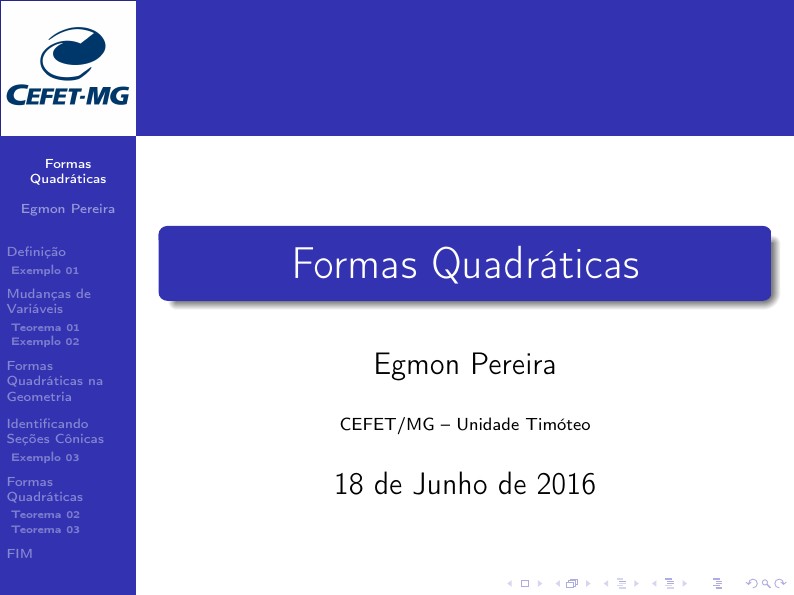overleaf template galleryCommunity articles — Recent
Papers, presentations, reports and more, written in LaTeX and published by our community.

Trabalho de Álgebra Linear apresentado no CEFET/MG - Campus Timóteo

Compressive Sensing is a Signal Processing technique, which gave a break through in 2004. The main idea of CS is, by exploiting the sparsity nature of the signal (in any domain), we can reconstruct the signal from very fewer samples than required by Shannon-Nyquist sampling theorem. Reconstructing a sparse signal from fewer samples is equivalent to solving a under-determined system with sparsity constraints. Least square solution to such a problem yield poor `results because sparse signals cannot be well approximated to a least norm solution. Instead we use l1 norm(convex) to solve this problem which is the best approximation to the exact solution given by l0 norm(non-convex). In this paper we plan to discuss three applications of CS in estimation theory. They are, CS based reliable Channel estimation assuming sparsity in the channel is known for TDS-OFDM systems[1]. Indoor location estimation from received signal strength (RSS) where CS is used to reconstruct the radio map from RSS measurements[2]. Identifying that subspace in which the signal of interest lies using ML estimation, assuming signal lies in a union of subspaces which is a standard sparsity assumption according to CS theory[3]. Index terms : Compressive Sensing, Indoor positioning, fingerprinting, radio map, Maximum likelihood estimation, union of linear subspaces, subspace recovery.

A short look at how to compute the domain of a composite function.

Template details (c) 2002 Matthew Boedicker (original author) http://mboedick.org (c) 2003-2007 David J. Grant http://www.davidgrant.ca (c) 2008 Nathaniel Johnston http://www.nathanieljohnston.com (l) 2012 Arun I B http://www.ee.iitm.ac.in/~ee10s026/ This work is licensed under the Creative Commons Attribution-Noncommercial-Share Alike 2.5 License. To view a copy of this license, visit http://creativecommons.org/licenses/by-nc-sa/2.5/ or send a letter to Creative Commons, 543 Howard Street, 5th Floor, San Francisco, California, 94105, USA.

Proof of Euler's Formula

Una guía de matemáticas básicas.

My 1st blog entry

Proof of a function's representation with Taylor Series
\begin
Discover why over 20 million people worldwide trust Overleaf with their work.
